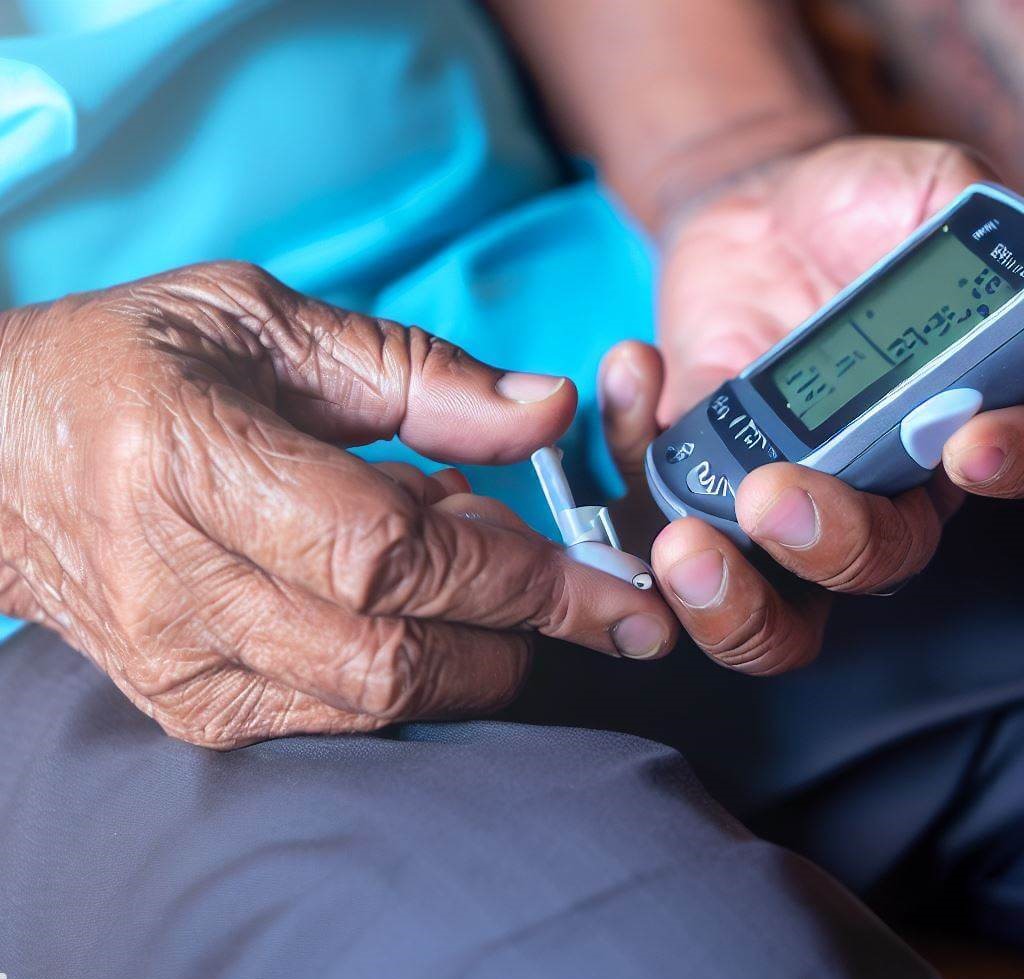Maintaining appropriate blood sugar levels is vital to overall health, especially for those with diabetes or other metabolic conditions. High blood sugar levels, known as hyperglycemia, can lead to several health problems if not addressed promptly. This comprehensive guide aims to provide insights into the importance of reducing high blood sugar and offer practical ways to achieve healthier levels.
Understanding Blood Sugar Levels
Blood sugar, also known as glucose, is the primary energy source for your body’s cells. The levels of glucose in your blood are regulated by the hormone insulin, produced by your pancreas. If your body doesn’t produce enough insulin or if your cells become resistant to its effects, you may experience high blood sugar. This condition, if persistent, can lead to serious complications, including diabetes, heart disease, stroke, and kidney damage.
Recognizing High Blood Sugar
High blood sugar doesn’t always cause symptoms, especially in the early stages. However, if your blood sugar levels remain consistently high, you may experience symptoms such as frequent urination, increased thirst, fatigue, blurred vision, and frequent infections. In severe cases, untreated high blood sugar can lead to medical emergencies like diabetic ketoacidosis or hyperosmolar hyperglycemic state, which require immediate medical attention.
The Role of Diet in Blood Sugar Control
Diet plays a crucial role in managing blood sugar levels. The foods you eat impact how much glucose enters your bloodstream and how quickly this happens. By making conscious food choices, you can effectively manage your blood sugar levels and avoid the dangers of hyperglycemia.

Dietary Strategies for Blood Sugar Reduction
There’s no one-size-fits-all approach to diet for managing blood sugar, but some general principles can guide you.
Foods to Include
Foods with a low glycemic index, rich in fiber, and those high in healthy fats can help control your blood sugar. Some examples include:
- Whole grains: Foods like brown rice, oatmeal, and whole grain bread are high in fiber and have a lower glycemic index than their refined counterparts.
- Lean proteins: Chicken, fish, eggs, and tofu provide essential nutrients without causing a significant rise in blood sugar.
- Non-starchy vegetables: Broccoli, spinach, bell peppers, and other non-starchy vegetables are low in carbs and high in fiber, making them a good choice for blood sugar control.
- Healthy fats: Avocados, nuts, seeds, and olive oil can help you feel full and satisfied without spiking your blood sugar.
Foods to Avoid
Limit foods high in refined carbs, added sugars, and unhealthy fats, as they can cause rapid spikes and crashes in your blood sugar levels. These include sugary drinks, white bread, pastries, and fried foods.
The Importance of Hydration
Staying well-hydrated is essential for overall health and can also help regulate blood sugar levels. Water doesn’t impact your blood sugar and helps remove excess glucose through urine.
Physical Activity and Blood Sugar
Physical activity is another crucial factor in blood sugar control. Exercise helps increase insulin sensitivity and allows your cells to use glucose more effectively, thus lowering your blood sugar levels.
Effective Exercises for Lowering Blood Sugar
Different types of exercise can contribute to blood sugar control:
- Aerobic exercises: Activities like walking, jogging, cycling, or swimming can help your body use insulin more effectively and lower blood sugar levels.
- Resistance training: Weightlifting or bodyweight exercises can improve insulin sensitivity and help maintain lean muscle mass, which helps regulate blood sugar.
- Flexibility and balance exercises: Activities like yoga and tai chi can reduce stress, improve balance, and contribute to overall health.
Precautions during Exercise
While exercise is beneficial, it’s important to take precautions if you have high blood sugar or diabetes. Monitor your blood sugar levels before and after exercise, stay hydrated, and avoid intense exercise if your blood sugar is too high.
The Role of Physical Activity in Blood Sugar Management
Physical activity plays a pivotal role in managing high blood sugar levels and maintaining overall health, especially for individuals with diabetes or those at risk for the condition. Regular exercise can lead to significant health benefits, including improved blood glucose control, weight management, cardiovascular health, and overall wellbeing.

Understanding the Blood Sugar-Exercise Connection
To appreciate the profound influence exercise has on blood sugar levels, it helps to understand what happens in your body during physical activity. When you engage in exercise, your muscles need more energy, which comes from glucose in your body. As your muscles contract, they draw glucose from the bloodstream, effectively lowering blood glucose levels. Moreover, exercise also enhances the sensitivity of your cells to insulin, thereby allowing your cells to use glucose more efficiently, even hours after the workout. This dual effect of physical activity makes it a powerful strategy for managing high blood sugar levels.
Types of Exercise for Blood Sugar Control
To achieve optimal blood sugar control, a balanced exercise regimen should include a mix of the following:
- Aerobic Exercise: Activities like walking, cycling, swimming, or even dancing increase your heart rate, improving cardiovascular fitness and glucose utilization.
- Resistance Training: Resistance or strength training exercises, such as weightlifting or bodyweight exercises, increase muscle mass. More muscle mass means more glucose storage and, hence, better blood sugar control.
- Flexibility and Balance Exercises: Practices such as yoga and tai chi not only enhance flexibility and balance but also contribute to stress management and mental wellbeing, indirectly supporting blood sugar management.
Exercise Tips for Individuals with High Blood Sugar
Adopting an exercise routine might seem daunting, especially if you’re new to it or managing a chronic condition. Here are some practical tips to help you get started and sustain your physical activity regimen:
- Start Slow and Gradually Increase Intensity: Begin with mild activities like walking or gentle yoga. As your fitness improves, gradually increase the duration and intensity of your workouts.
- Monitor Your Blood Sugar: Exercise can cause your blood sugar levels to drop. Hence, it’s essential to monitor your levels before, during, and after exercise to avoid hypoglycemia.
- Stay Hydrated: Dehydration can impact your blood sugar levels. Ensure to drink plenty of water before, during, and after your workout.
- Consider a Pre-Workout Snack: Depending on your blood sugar levels and the intensity of your workout, you might need a small snack before you exercise. Consult with your healthcare provider or a dietitian to understand what works best for you.
Remember, the key to success in managing blood sugar levels through exercise lies in consistency and enjoying what you do. Choose activities that you love, making them a part of your daily routine. Over time, this can lead to substantial improvements in your blood glucose control and overall health. As with any new exercise regimen, always consult with your healthcare provider to understand what type and amount of exercise is safe and suitable for you.
Stress Management and Blood Sugar Levels
Managing stress effectively can also have a significant impact on blood sugar control. Stress hormones like cortisol can cause your blood sugar levels to rise. Finding effective strategies to manage stress can help keep your levels in check.

Relaxation Techniques
Several relaxation techniques can help reduce stress and positively impact blood sugar levels:
- Deep Breathing: This simple yet effective technique can help reduce stress and lower blood sugar levels.
- Mindfulness Meditation: Regular practice of mindfulness can help you manage stress and may have a positive impact on blood sugar control.
- Yoga: Besides improving flexibility and strength, yoga can help you relax, reduce stress, and manage blood sugar.
Getting Adequate Sleep
Quality sleep is crucial for various aspects of health, including blood sugar control. Lack of sleep can affect the body’s insulin sensitivity and lead to higher blood sugar levels.
Medication and Regular Check-ups
While lifestyle modifications are the cornerstone of managing blood sugar levels, medications may be required in some cases. Regular check-ups can help monitor your blood sugar levels and adjust your treatment plan as needed.
Conclusion
Managing high blood sugar involves a comprehensive approach that includes a healthy diet, regular physical activity, stress management, and potentially medication. While it may seem challenging, with the right knowledge and support, it’s entirely possible to keep your blood sugar levels within the desired range and lead a healthy, fulfilling life.
FAQs
1. Can I lower my blood sugar levels naturally?
Yes, lifestyle modifications such as adopting a healthy diet, exercising regularly, managing stress, and getting adequate sleep can help control blood sugar levels.
2. Does drinking water lower blood sugar?
Staying well-hydrated can help regulate blood sugar levels. Water doesn’t impact your blood sugar and helps remove excess glucose through urine.
3. Can exercise immediately lower blood sugar?
Exercise helps increase insulin sensitivity and allows your cells to use glucose more effectively, which can lower your blood sugar levels.
4. How does stress affect blood sugar levels?
Stress hormones like cortisol can cause your blood sugar levels to rise. Effective stress management can help control your levels.
5. How important is sleep for blood sugar control?
Quality sleep is crucial for various aspects of health, including blood sugar control. Lack of sleep can affect the body’s insulin sensitivity and lead to higher blood sugar levels.
This concludes the comprehensive guide on reducing high blood sugar levels. Implementing these steps may help significantly in managing and controlling diabetes. Remember, everyone is unique and what works for one person may not work for another. It’s important to work closely with your healthcare provider to create a plan that fits your lifestyle and needs.





